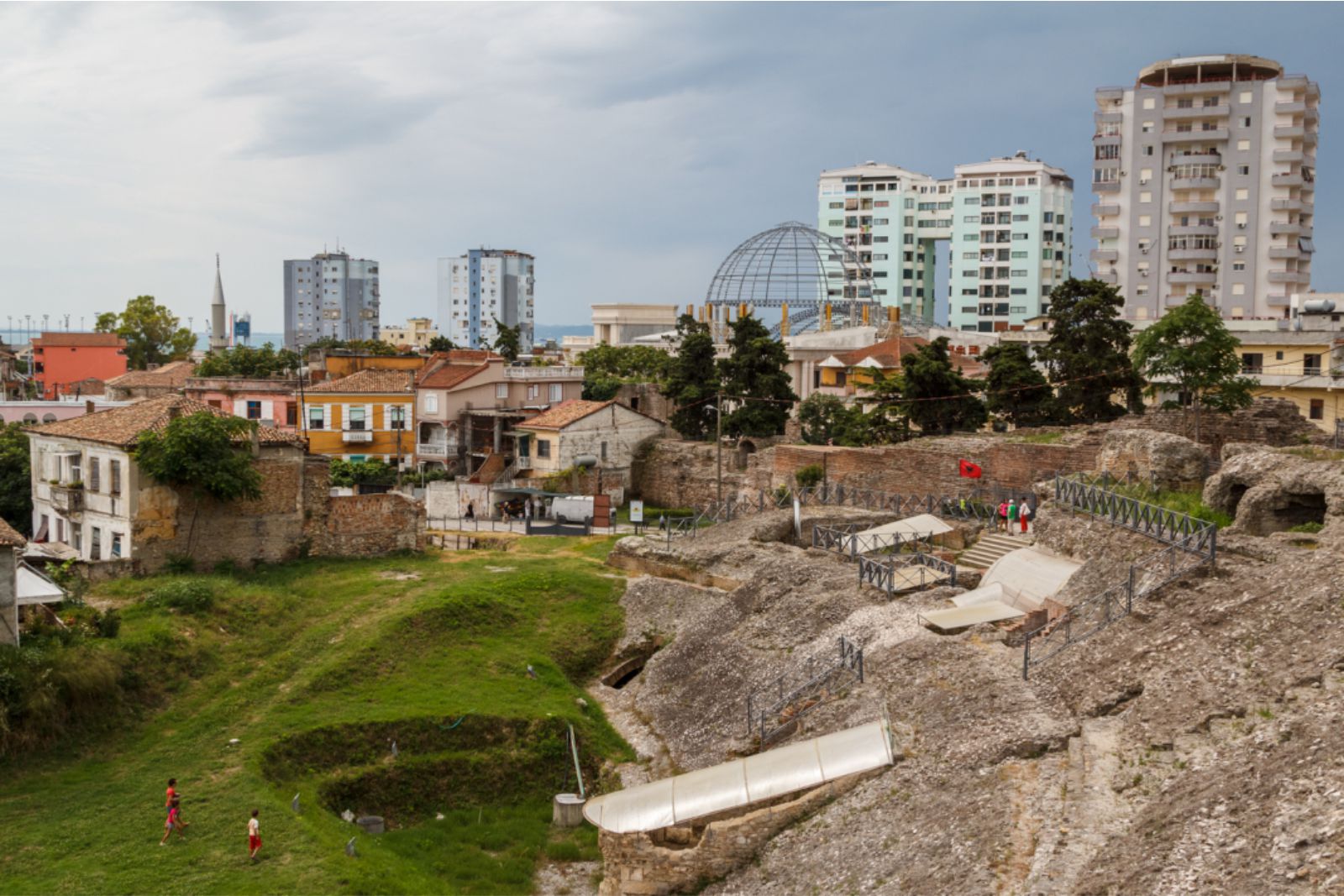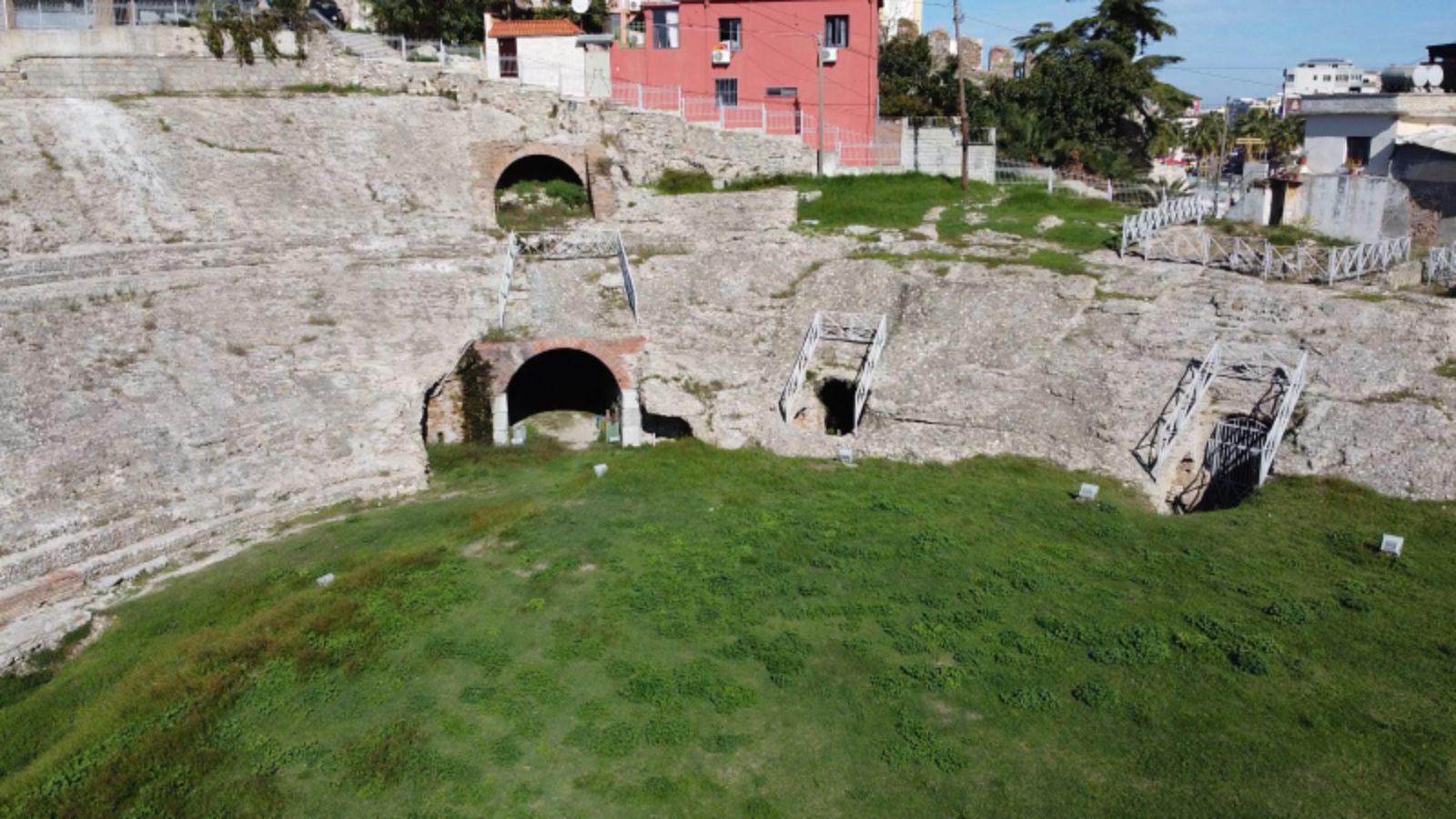The city of Durrës is set to become the cultural gateway of the Mediterranean, a hub and magnet for Albania and the region with its amphitheatre playing a leading role as the icon at the heart of the city. Stefano Boeri Architetti and SON Architects are announced as winners of the tender presented by the Ministry of Culture and the Albanian-American Development Foundation (AADF) to support the long-term vision outlined in the recently drafted Integrated Management Plan (IMP) for Durrës aimed at enhancing the city’s historical assets.
The winners will be responsible for the interpretation, presentation and enhancement of the Roman Amphitheatre, the Byzantine Forum and Roman Baths, as well as the design of a series of urban pathways in the historic centre of Durrës. The project will create an archaeological park in the heart of the city for residents and visitors. With its elliptical shape, the amphitheatre plays a leading role as the icon at the heart of the city.

It has been neglected for a long time and there has not been a plan for the integration of the archaeological resources of the city or the creation of an itinerary largely due to limited funding and a slow timescale with international archaeological teams working on a part-time basis. Today, the amphitheatre is the main archaeological attraction for the city and receives approximately 20,000 visitors per year (pre-COVID-19). The urban pathways will become a tool for re-connecting the physical and visual links between historical assets of the city’s urban heritage that have been fragmented by modern development.
The urban paths will then be used by residents and explored by visitors. The main objective of the project is to connect the waterfront and the port of Durrës with the city’s main tourist attractions by means of urban pathways, since many outlying cultural assets still remain disconnected and difficult for residents and visitors to access, thereby hindering touristic development. The pathways are intended to connect these sites. One component of this project is the establishing of the legal status of these rights-of-way for future protection.

Finally, the Byzantine Forum and the Roman Baths are also important cultural assets for Durrës, although unfortunately they are closed, hidden, and underappreciated. The Roman Baths are listed as a cultural monument. They cover an area of approximately 700 square meters and include different spaces, of which only two, the caldarium and pool, have been identified, while the tepidarium and the frigidarium remain unexcavated. The archaeological area of the Byzantine Forum, or so-called “Rotonda” served as a public space for the organization of fairs and meetings and covers an area of approximately 2,530 square metres.
It contains the remains of a round portico with a podium at the centre which remains partially below the level of the surrounding streets, sidewalks, and buildings. The two areas are currently separated from each other by a narrow unexcavated strip at the current street level and access is only granted by special arrangements. Stefano Boeri Architetti and SON Architects will work closely with the Ministry of Tourism and Environment through the National Tourism Agency, the National Coastline Agency and the National Agency for Territorial Planning. Source and images Courtesy of Stefano Boeri Architetti.





